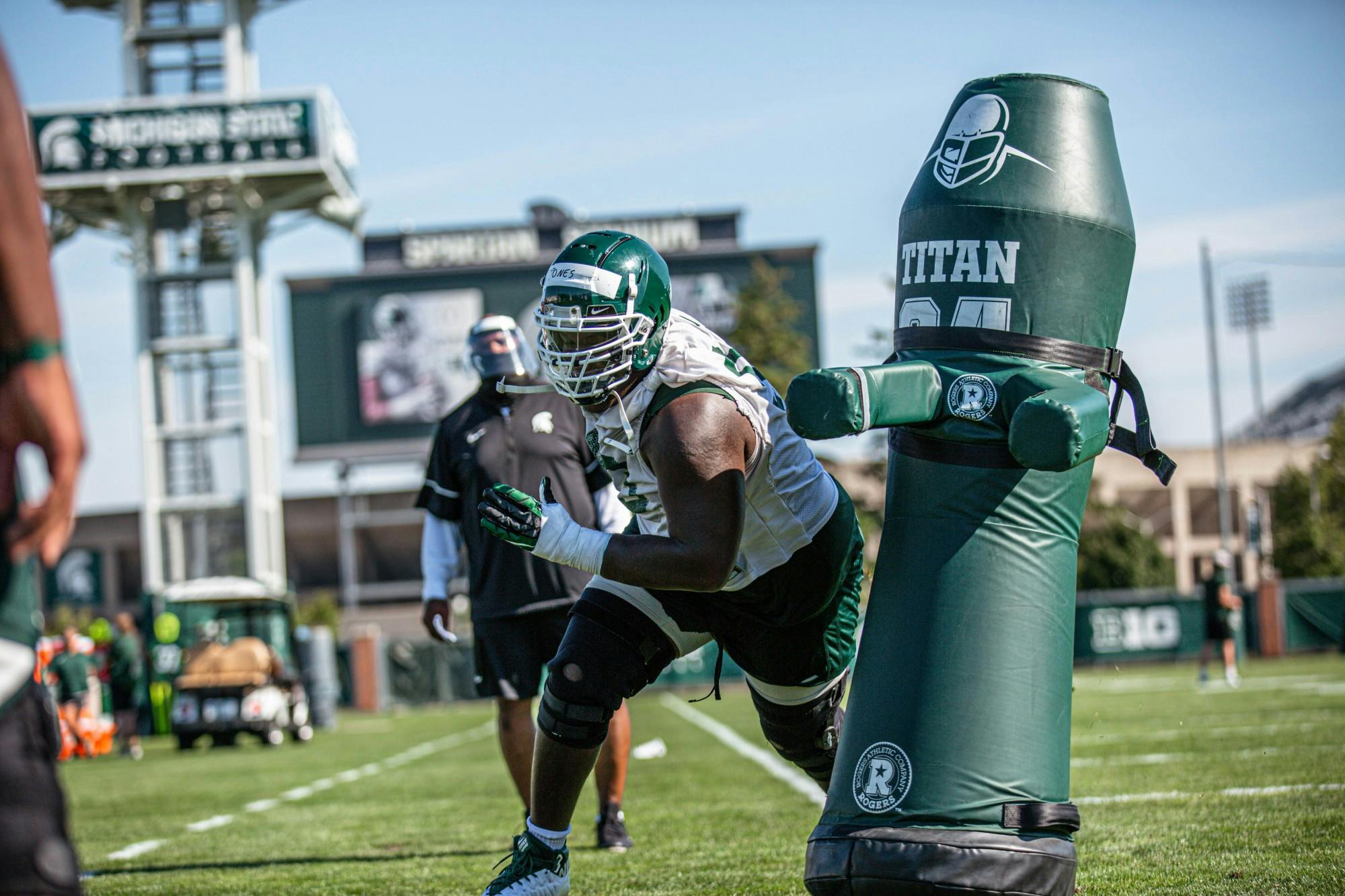The COVID-19 pandemic has already taken a toll on Michigan State University’s finances — however, some of the impacts might be lightened for the athletic department with the looming return of Big Ten football.
The Big Ten conference formally announced an eight-week 2020 football schedule aimed to start Oct. 24, when MSU will host Rutgers at Spartan Stadium.
For this season, the conference adopted significant medical protocols, including daily antigen testing, enhanced cardiac screening and data-driven decision-making about practices and games. The Big Ten will also not allow fans into their stadiums.
MSU Athletic Director Bill Beekman said he believes bringing back the season will allow the university’s athletic department to break even financially.
This summer, the university said they were estimating $300 million in lost revenue for the 2021 fiscal year due to the pandemic, according to the financial impact on their website.
At a virtual Lansing Regional Chamber Economic Club program held prior to the official postponement of Big Ten fall sports, Beekman said the athletic department could lose $80-85 million without a football season.
"We sort of talked publicly about $80 to $85 (million) but with all the ancillary things as they add up, it really had that traumatic an impact,” Beekman said in a video conference Sept. 16. “So, we’ve been doing a tremendous amount of budget-cutting.”
The Board of Trustees approved MSU’s 2020-2021 budget June 26, before the postponement of Big Ten fall sports. The budget included a $128.7 million budget for intercollegiate athletics, a $11 million drop from the 2019-2020 $139.7 million budget.
Of last year’s near $140 million budget, $42 million was spent on personnel costs, another $15 million was spent on scholarships, and the remaining $83 million was used to cover all operational costs from facilities and equipment to travel and operating expenses, Beekman said after the season was postponed.
Non-personnel costs are estimated to be two-thirds of the total athletics budget, including personnel expenses accounting for salaries, fringe benefits, retirement and such.
“We’ve been working very, very hard to trim the budget on the non-personnel side as a priority so we could do as little personnel cutting as absolutely possible,” Beekman said. “With that said, we’ve done some freezes, we’ve held open some positions, and just cut back in a whole variety of ways both personnel and otherwise.”
According to the university’s Together We Will coronavirus informational page, all varsity sports and departments have been asked to reduce their budgets by at least 25%. All contract employees making $100,000 or greater, which include head football coach Mel Tucker, head men’s basketball coach Tom Izzo, head women’s basketball coach Suzy Merchant and Beekman himself, are taking salary reductions from Sept. 1 to Aug. 31, 2021.
Additionally, as of this month, 50 athletics employees have taken salary reductions ranging from 15 to one percent. Another 31 employees saw their sports camp income decrease, ranging from 23 to one percent of their income.
In September, it was announced many athletics staff members will undergo furloughs of at least one month before the end of the year. Eleven positions are also vacant due to the department's hiring freeze.
With the additional budget cuts made over the summer, the $140 million budget was expected to go down to $100 million without football. Only a difference of $40 million, rather than the $80 to $85 million they had previously estimated.
That $40 million the university falls short on, Beekman expects to be taken care of by football television deals, making up for the loss of ticket sales as well.
“As we currently anticipate things going, we wouldn’t have any fans in the stands so we’d lose revenue from not only ticket sales but premium seating, seat premiums, club and sideline seating, all of those things,” Beekman said. “... Ballpark, anticipating about $40 million from television revenue for football in a normal year, if we get $30 million from television revenue this year, about three-quarters of the games played then that gets us to about a break-even for this year.”
It is primarily the revenue from football and men’s basketball that funds the other non-revenue sports at MSU. This was a primary financial concern of having no football season.
Support student media!
Please consider donating to The State News and help fund the future of journalism.
Some schools that faced financial budget implications because of COVID-19 have begun cutting non-revenue programs. Central Michigan University decided to discontinue its track and field program in May.
MSU sponsors 25 sports, 13 for men and 12 for women. All of them are funded by the two main revenue generators, football and men’s basketball.
According to MSU’s 2019 Equity in Sports report, football and men’s basketball brought in nearly $100 million in revenue. The next biggest revenue stream comes from ice hockey at $2.7 million.
All sports aside from football and men’s basketball brought in a combined $6.79 million.
While the men's basketball season is currently set to begin Nov. 25, it is the return of football after all this time that has left the athletic department on a positive note in terms of their finances.
“My sense is that with the cuts we’ve put in place, playing the amount of football we’re planning on playing, with the TV revenue — but not revenue from tickets and other things — we should be able to break even for this year,” Beekman said.
This article is part of our Information Overload print edition. View the entire issue here.
Discussion
Share and discuss “Upcoming football season's impact on MSU athletics budget” on social media.








